Issue #130: Cauliflower au Gratin
What to Cook for Lunch? Gratin or Gratinata? A Gateway Vegetable Dish
In addition to all the things going on in the world, there’s a lot of change on the horizon at home. Nate has accepted an exciting new job as Chair of the Department of Medicine at Dartmouth Health, and we are leaving New York City, Manhattan to be more precise, for New Hampshire’s rural Upper Valley. As someone who grew up in Toronto and has lived happily on occasion in Paris, Florence, Milan, and for the last 32 years, New York, I never thought I’d live anywhere I couldn’t walk to a corner store or hop on a subway. I remember the first time I went to Tokyo and felt, “Ah, finally some place that’s urban enough for me!” Alas, after COVID-19, after Milo, after reaching a certain age, the time has come to decamp to the country. In fact, this weekend, we entered into contract on a substantial house on six wooded acres in Plainfield, New Hampshire.
There will be more about New Hampshire in coming issues, for sure, as my focus changes from city to country life. But in the meantime there is the question of our apartment in NYC, which is for sale. We both feel it’s harder to leave our apartment than it is the city. If you or anyone you know might be interested in purchasing a beautiful, custom-built, three-bedroom, two-bathroom, two-terrace apartment in Gramercy with a real cook’s kitchen (including a powerful Blue Star range, a second built-in refrigerator and a standing freezer) and more storage than you thought possible, now’s your chance. So many wonderful meals, so many amazing chefs…Here’s the listing.
We just got home from the cooking marathon that is our annual Thanksgiving trip to Maine. The holiday turkey feast itself is just one of the many meals I prepare, and not even the most extravagant, for a couple of housefuls of good eaters. Because of my continued fascination with Korean food, this year I made an elaborate Korean Shabbat dinner for 15 people the day after the holiday. And with the leftovers of that meal as a base, I couldn’t stop exploring Korean cooking throughout the weekend.
I had assumed this week’s newsletter would feature one of the easy Korean dishes I particularly loved—spicy bbq pork belly—that was part of a ssam spread I made on Sunday night. But then yesterday my friend Moira came over for lunch. I didn’t really know what I would make for her when I started to cook. We’d been away for almost ten days, having combined a house-hunting trip to New Hampshire with our annual visit to Maine. There wasn’t much in the fridge besides a small head of cauliflower, some cheese, and a half-gallon of milk on the verge of turning. Hmn.
Chou-fleur au gratin!
Cauliflower smothered in cream sauce and blanketed in cheese is the kind of old-fashioned French vegetable dish that reminds you salad wasn’t always the preferred way to get fiber, vitamins, and phytochemicals into your diet (sorry Emily Nunn). Although it seems fussy, a vegetable gratin is really quite simple, drawing on a couple of classic culinary techniques, such as blanching and béchamel, one of the five mother sauces. It’s a gateway dish for people who say they don’t like vegetables because who doesn’t like anything covered in melted cheese? And it is certainly satisfying enough to be the entrée for a lunch or dinner on a frigid cold day, which yesterday was.
I underscored the move of my gratin from side dish to main by adding a layer of thinly sliced ham, the one I purchased on a detour sparked by a highway sign we spotted as we were driving through Pennsylvania Dutch country. Who could pass by a roadside butcher shop called Dietrich’s Meats & Country Store without stopping?
A Historical Note about Cream Sauce
After college I was selected as one of 30 recent graduates to represent America in a new culinary program called ICIF, the Italian Culinary Institute for Foreigners, established in Torino by the Piemontese government and the American Gruppo Ristoratori Italiani to teach the world about authentic Italian cuisine. We were guinea pigs for the new school and our three-month curriculum consisted primarily of a parade of the best chefs, pastry chefs, and other food professionals from across Italy, who came to demonstrate different aspects of la cucina italiana vera.
One of the common if unofficial themes of the chefs’ presentations was, “We can cook as well as the French” (which wasn’t really anyone’s concern but their own). In fact, they would often say, “We taught them how.” The two most common pieces of evidence presented for this point were pasta sfoglia, or puff pastry, which several chefs demonstrated for us as an Italian staple, and besciamella, or béchamel, which the Italians insisted was invented in the very region of Piedmont where we were staying, at one time part of the Savoy kingdom.
I offer this story only because, while everyone thinks of a gratin as perhaps one of the Frenchiest of French dishes, a part of me always also thinks of it instead as a gratinata and I tilt my head in appreciation to Italy, as anyone who loves to cook and eat must often do.
RECIPE: Cauliflower au Gratin (or Gratinata)
(Makes about 6 servings as a side dish, 3 as a main)
4 tablespoons unsalted butter, divided
2 tablespoons all-purpose flour
2 cups whole milk
1 wedge of onion, cut through the root core so the layers hold together
1 whole clove
A dash of Worcestershire sauce or 1 teaspoon white saikyo miso
Freshly grated nutmeg
Salt
Freshly ground black pepper
1 small head cauliflower (about 1 1/4 pounds)
Toasted breadcrumbs (unseasoned)
2 ounces thinly shaved smoked ham
3 ounces grated Gruyère or Comté
½ ounce grated Parmigiano-Reggiano
Begin by making the béchamel or cream sauce. In a small saucepan, melt 2 1/2 tablespoons of the butter over medium-high heat. Add the flour and stir with a wooden spoon or rubber spatula until smooth and bubbly. (This is called a roux.) Let cook a minute or two until you can smell the aroma of toasted flour. Switch to a whisk and beat in the milk, making sure to dissolve any clumps of roux. Bring to a boil so it starts to thicken, whisking often, then turn down the heat to low and simmer.
Take the wedge of onion—it’s important to cut it through the root core on the bottom of the onion so the layers stay intact—and pierce it with the clove. Add it to the simmering sauce along with the Worcestershire or miso, some freshly grated nutmeg, and a pinch of salt. Let the sauce simmer for a good 15 to 20 minutes to develop flavor and body. Remove the onion and clove. Season with some black pepper. Taste the sauce and adjust the salt. Keep warm.
Meanwhile, blanch the cauliflower. Cut out the core of the cauliflower and break the head into large florets. Bring a pot of heavily salted water to a boil. Add the florets, bring back to the boil, and let cook just 2 minutes. Drain, rinse with cold water, and set in a colander or sieve to dry out. There’s not need to shock the cauliflower in ice water, but it’s important to drain it well.
Preheat the oven to 375°F. Generously grease a one-quart gratin or other baking dish with half of the remaining butter. Dust the dish with a fine coating of bread crumbs and layer the shaved ham on the bottom. Arrange the blanched cauliflower on the ham. Spoon the béchamel over the cauliflower. Top with the grated cheeses, both Gruyère and Parimigiano. Add another dusting of bread crumbs and dot with the remaining butter. Bake for about 40 minutes, until the sauce is bubbling and the cheese has melted and nicely browned. If it starts to brown too much, reduce the heat. You can keep the gratin warm for an hour or so by reducing the oven temperature to 250°F. Serve with plenty of fresh crusty bread to soak up the sauce that pools in the bottom of the dish.
I promise to give you the recipe for the Korean spicy bbq pork belly in a future issue.
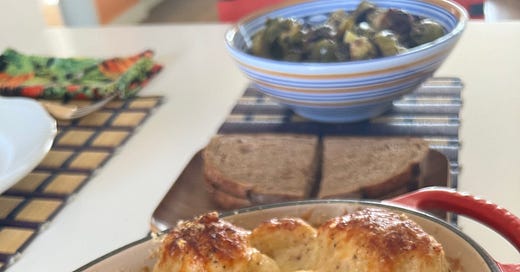


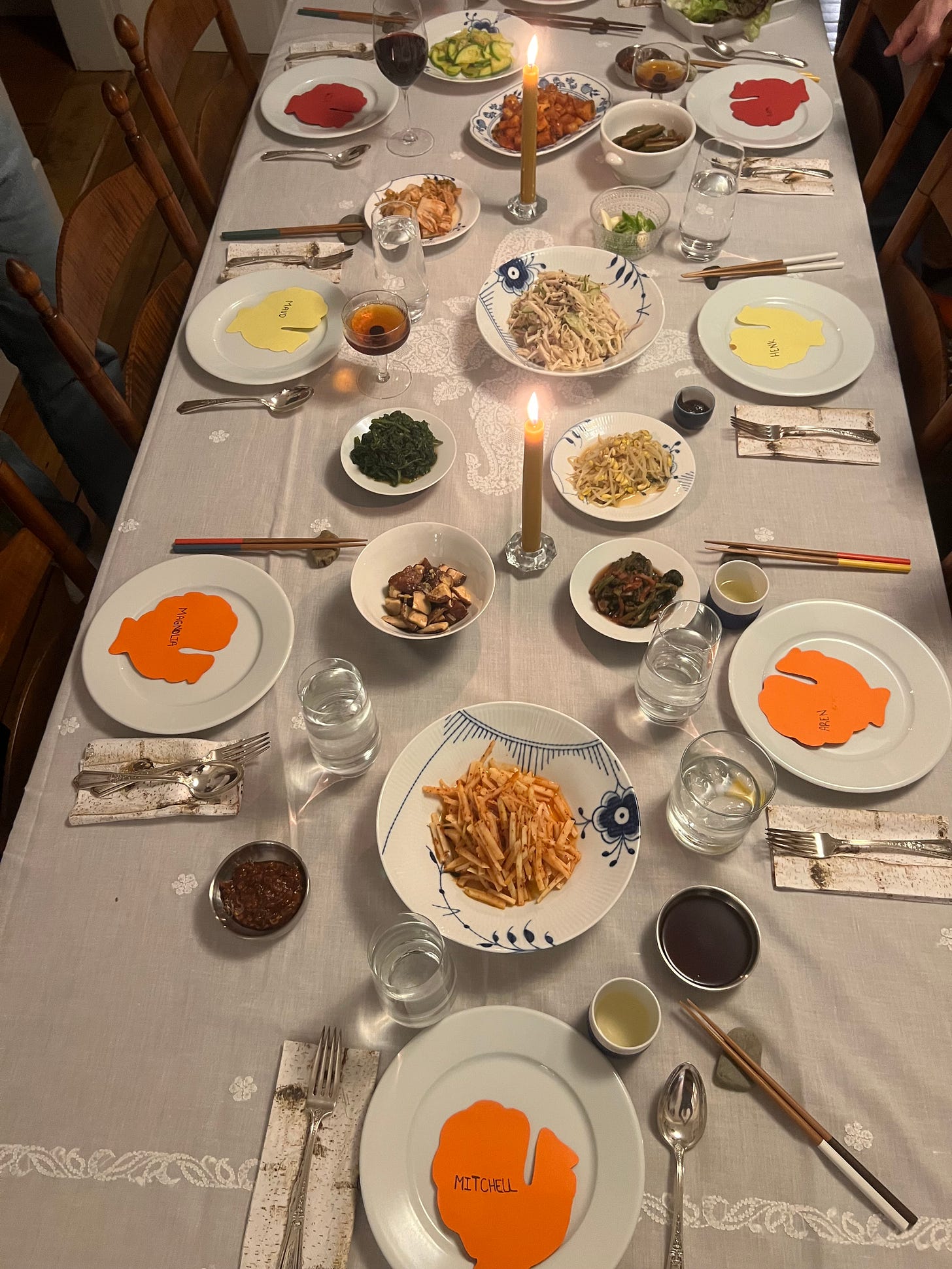

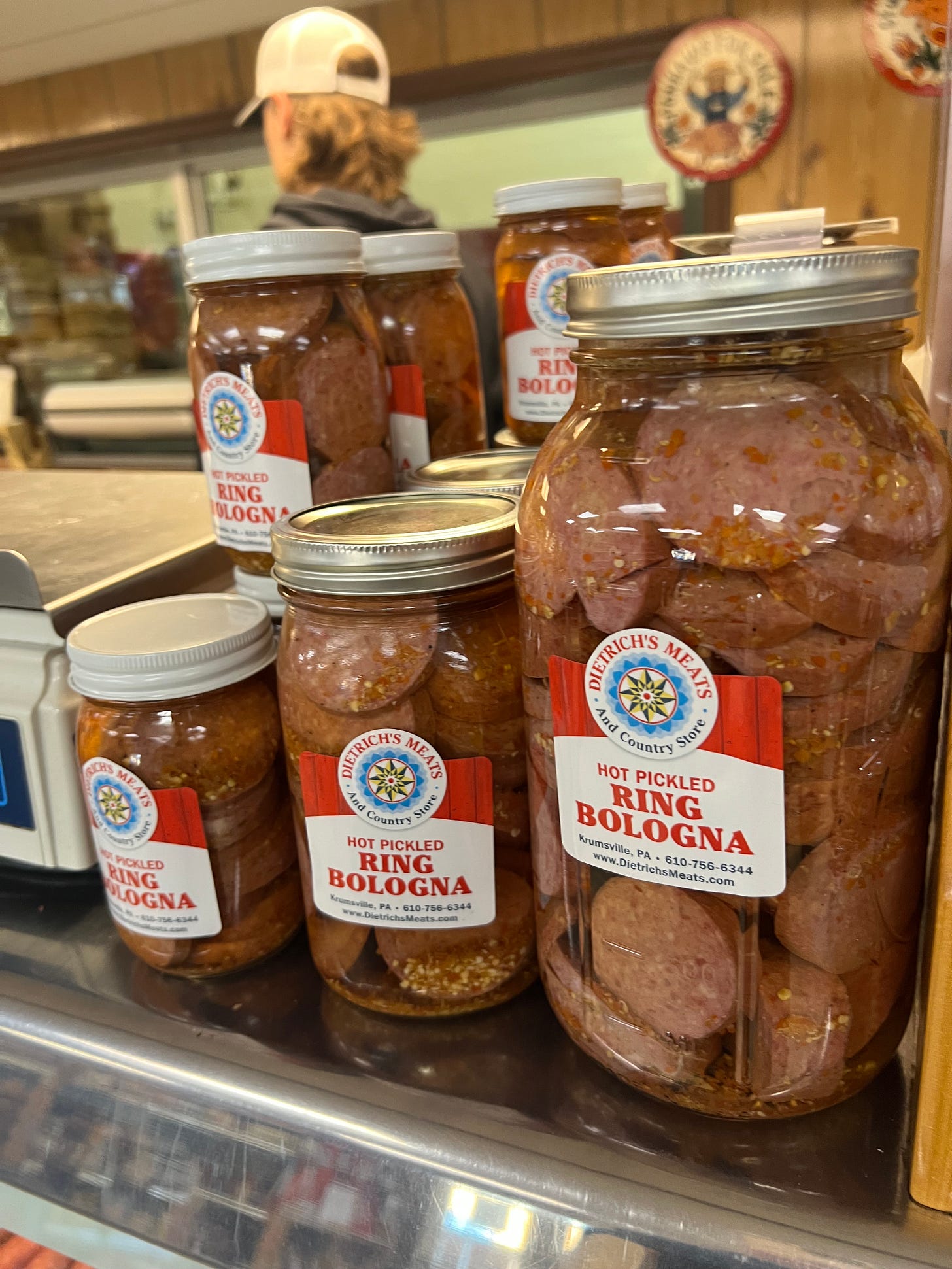
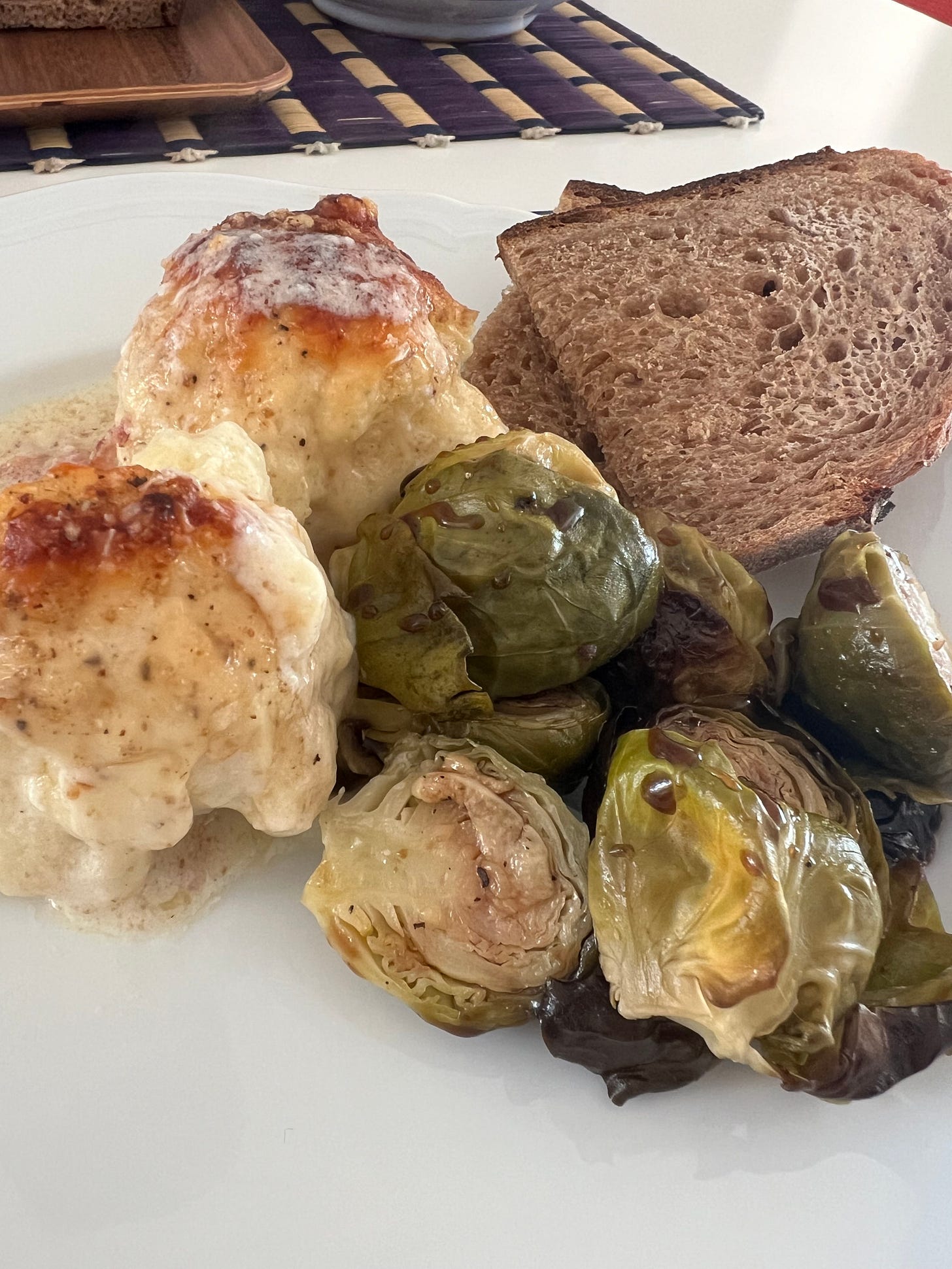
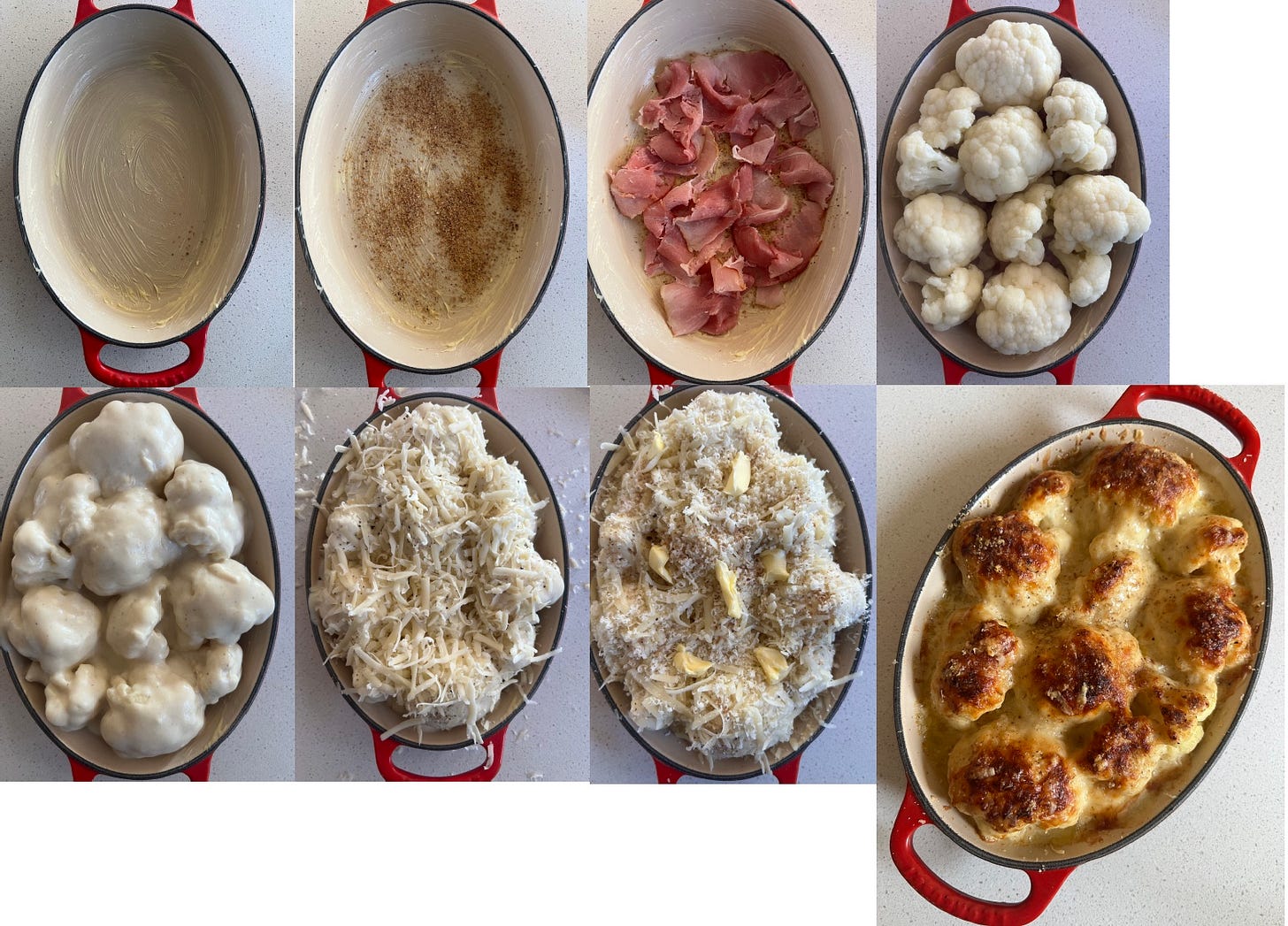
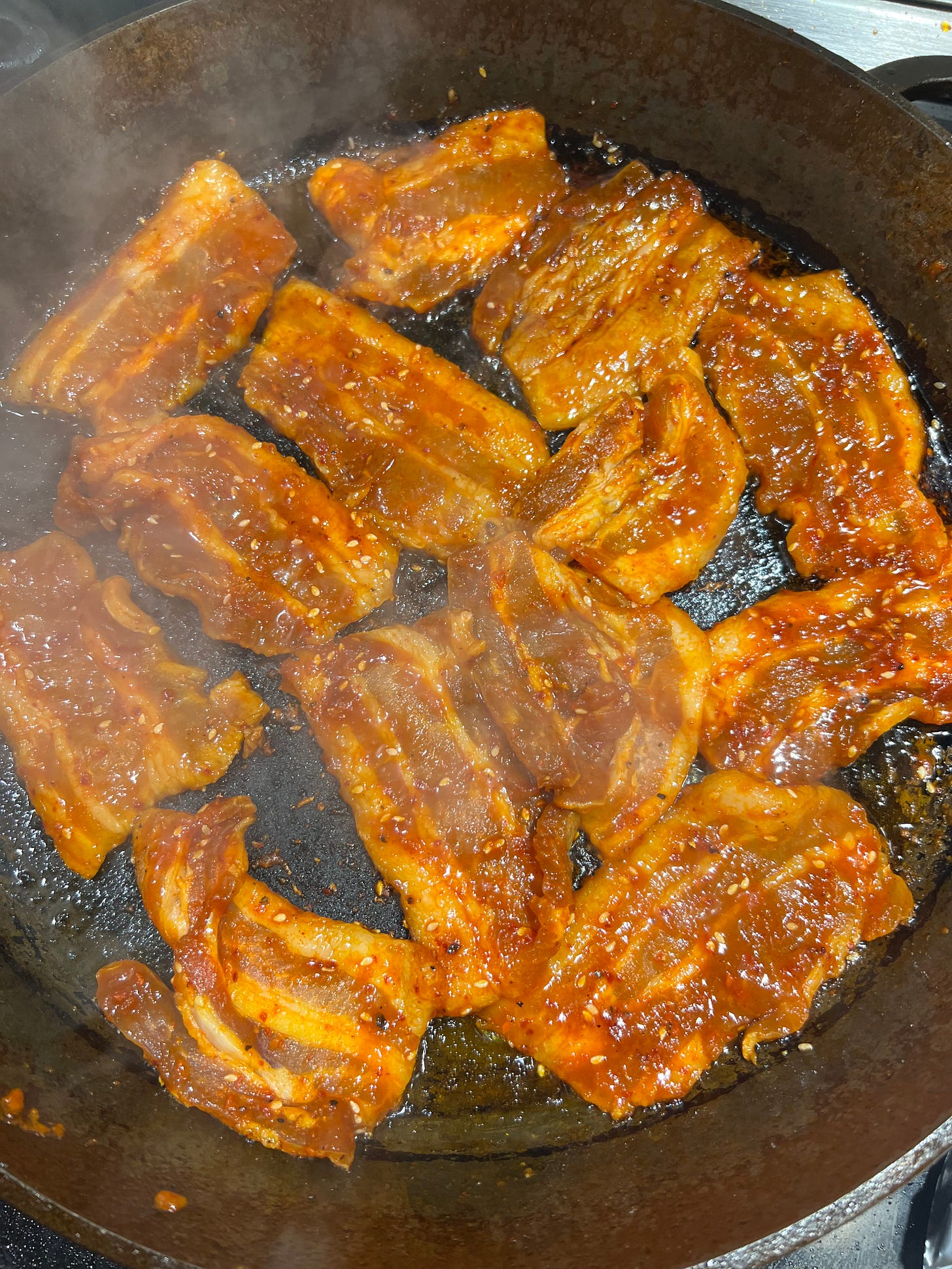
Congrats to you and Nate! We (and NYC) will miss you, but this is such an incredible opportunity.
Michell, sounds as though this move to New Hampshire will be just what the doctor ordered for you and Nate. Wishing you joy and the best always.